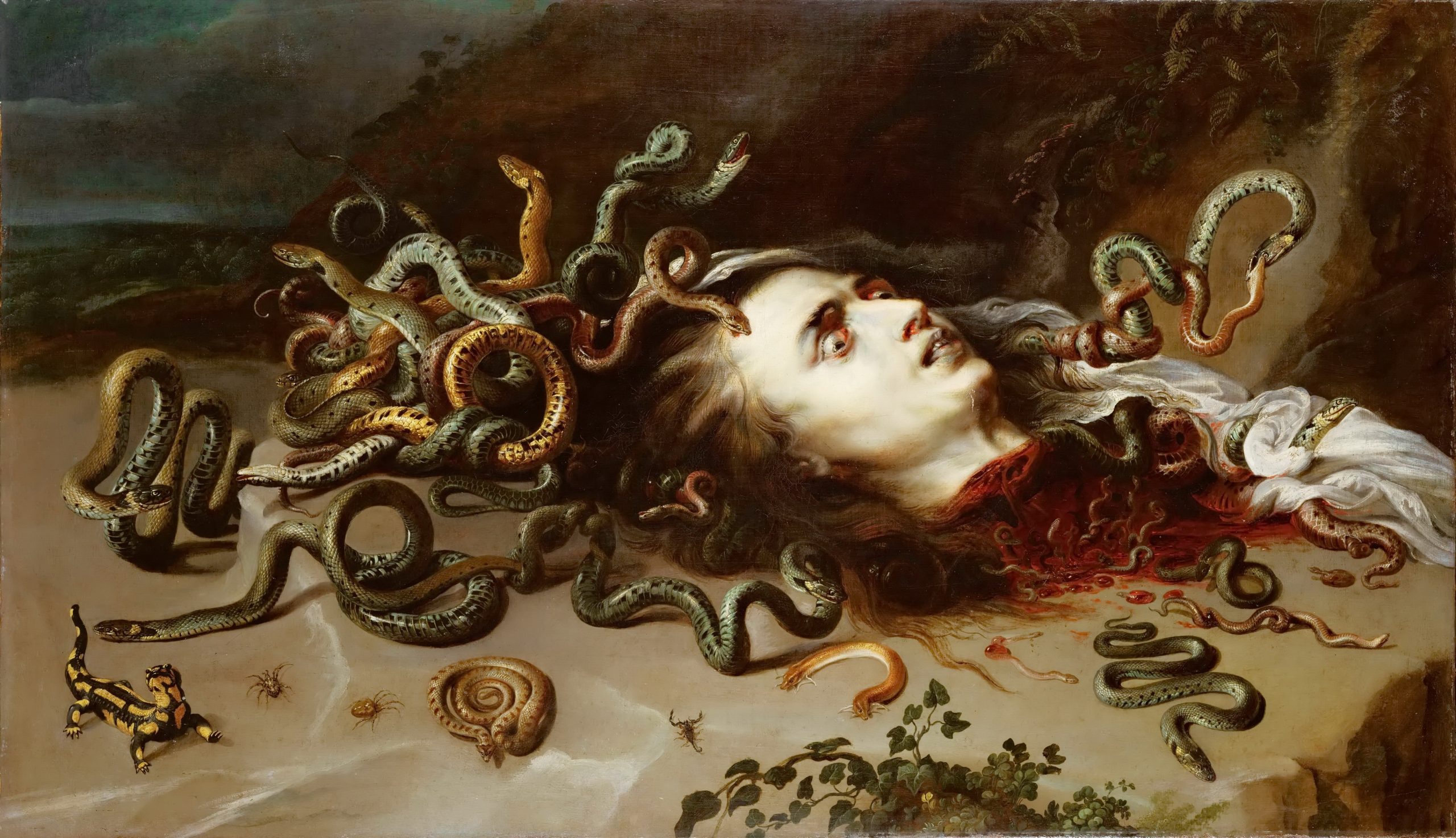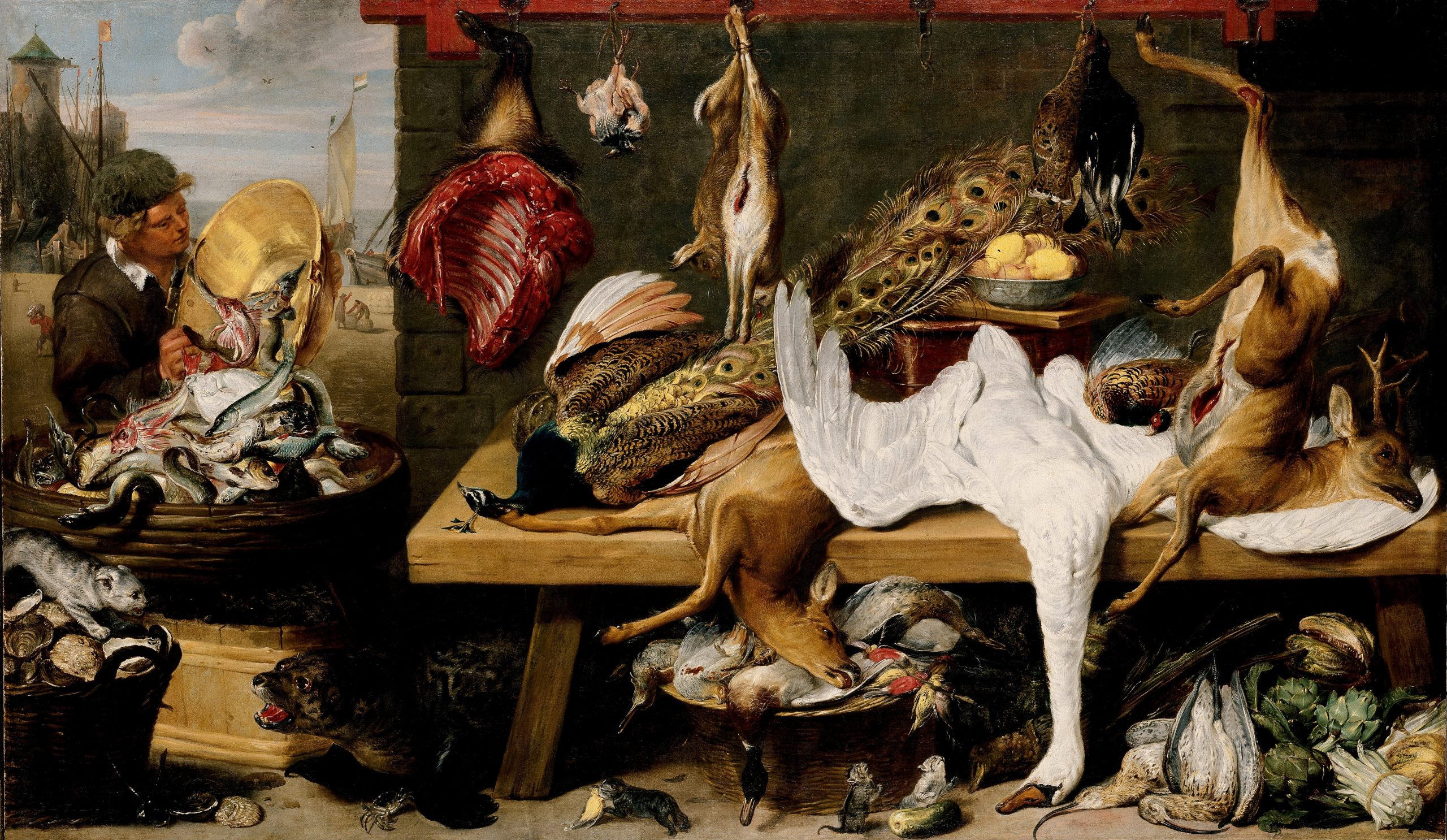Frans Snyders
Frans Snyders’ Still Life is currently resting awaiting a new space

Frans Snyders (1579 -1657, Antwerp) was a Flemish painter of animals, hunting scenes, market scenes and still lifes.
He was one of the earliest specialist animaliers and he is credited with initiating a wide variety of new still-life and animal subjects in Antwerp. He was a regular collaborator with leading Antwerp painters such as Peter Paul Rubens and Anthony van Dyck. His collaboration with Rubens started in the 1610s.
In 1611 he married Margaretha, the sister of Cornelis de Vos and Paul de Vos, two leading painters in Antwerp. Snyders had many important patrons and was commercially successful so he was able to purchase a house on the high-end Keizerstraat in Antwerp. In 1628 he became the dean of the Guild of Saint Luke.
In the period 1636-1638, he was one of the Antwerp artists who assisted Rubens in a large commission for decorations for the hunting pavilion Torre de la Parada of Philip IV of Spain. The two artists also worked together on decorations for the Royal Alcazar of Madrid and the royal Buen Retiro Palace in Madrid. Snyders painted about 60 hunting paintings and animal pieces after designs by Rubens. In 1639 Rubens and Snyders received a follow-up commission for an additional 18 paintings for the hunting pavilion.
In 1641 and 1642 Snyders travelled with other artists to the Dutch Republic. He had many apprentices who subsequently became famous in their own right, Nicasius Bernaerts, Peter van Boucle, Juriaen Jacobsze, Jan Fty, Jan Roos and Paul de Vos.
Snyders became a widower in 1647 and he died in 1657 childless. He bequeathed to his sister his fortune and extensive collection of leading 16th and 17th century Flemish and Dutch paintings.

Work General
Snyders initially devoted himself to painting flowers, fruit and still lifes. Later he turned to painting animals. He was particularly interested in depicting wild animals, which he showed engaged in lively hunts and fierce combats. He was one of the earliest specialist animaliers. His work as an animal painter was very influential on his contemporaries as well as on 18th-century French animaliers such as Jean-Baptiste Oudry and François Desportes. Jean-Baptiste-Siméon Chardin’s masterpiece The Ray recalls Snyders’ pictorial strength.
Animalier
Snyders was the first artist to concentrate on incidents exclusively featuring animals in everyday environments. In these creations animals such as dogs, cats and monkeys were the sole protagonists. The scenes included fights between animals, hunts by animals, scenes from fables and symbolic representations.
Still Lifes with Monkeys
His compositions with monkeys wreaking havock in a pantry became very popular. The monkeys are painted with naturalism, neither idealizing nor caricaturing them.

While the monkey had since the Middle Ages symbolized the sinner – a greedy, lecherous creature, driven by its senses only – during the 16th and 17th centuries it became the symbol of stupidity. Through their uncontrolled grabbing and consuming of food the monkeys show their barbaric nature which is driven solely by animal instinct and desire. The Louvre compositions with capuchin monkeys can also be interpreted as a form of vanitas paintings: the fruit in these still lifes is appetizing yet bound to perish. The fruit thus symbolizes the brevity and futility of life. The compositions can further be regarded as illustrations of the risk of poor household management which is driven solely by the satisfaction of the senses.

Concert of Birds
One of the symbolic representations that Snyders created and to which he returned regularly is the concert of birds. Compositions on this theme represent different species of birds perched on tree trunks in the form of a concert of birds, sometimes with a musical score. The theme of the concert of birds predates the courtly fashion of the Baroque period of maintaining aviaries.
Its symbolic meaning is linked to the representation of the birds of Saint Francis of Assisi and to the devotion to Our Lady of the Birds. In addition to this religious connotation, the concert of birds is also regarded as an allegory of the sense of hearing.
Other interpretations are that the concert represents Wisdom, as the owl, which is the animal representing this quality, is sometimes depicted as the conductor of the bird concerts. A further interpretation is that the concert of birds symbolically alludes to harmony and natural regulation, in the sense of balance with nature.

Market and Pantry Scenes
He painted many market scenes and his earliest work in this area was inspired by Pieter Aertsen and Joachim Beuckelaer who had pioneered and developed the genre in 16th century Antwerp. Whereas Aertsen and Beuckelaer often included a religious scene in the background of their market pieces, Snyders dispensed with this. His style gradually matured as a result of his exposure to Italian art during his trip to Italy and the work of Rubens, he became a fine colourist with strong compositional skills building up a profusion of disparate objects.
He not only created many large market and pantry scenes and game still lifes, usually including dead deer, he also painted smaller works which were reminiscent of the breakfast pieces and still lifes that originated in northern art around 1600. Rather than continue the descriptive manner of the Antwerp painter Osias Beert, Snyders’ innovative still lifes combined objects in groups to form a geometrically structured composition. Recurring motifs were dead hares and birds, tazze (shallow dishes on a tall foot), baskets with grapes and other fruit, enamelled pitchers and Chinese Kraak porcelain.
Snyders typically depicted game in the stage before it is prepared as food. These dead animals therefore resemble hunting trophies, which were often not even intended as food but rather for stuffing. Snyders often included live animals such as cats to create a contrast between the animate and inanimate elements. Snyders’ large game pieces were very influential and the Dutch painter Jan Davidsz. de Heem, who worked in Antwerp for a significant period of time, took inspiration from Snyders’ work to develop his own large-scale game pieces.

Collaborations
During this period it was common practise for artists to work collaboratively, especially on large commissioned pieces. Snyders’ expressiveness and ability to render different textures of furs and skins excited the admiration of Rubens and he frequently employed Snyders to paint animals, fruit and still life in his own pictures. Between 1610 and 1640 Snyders and Rubens often worked together. In the early period of this collaboration, Rubens would paint an oil sketch of the whole composition marking clearly where Snyders would put his contribution.
A famous collaboration between Rubens and Snyders is the Medusa painted around 1613-1617/1618, this small-scale work showed that Snyders’ manner was not only well suited to Rubens’ large pieces, but also adaptable to his smaller-scale works. The two artists’ brushwork was so close that contemporaries had difficulty distinguishing their contributions in collaborative works.

Snyders was a skilled figure painter in his own right as is evidenced by Jan Breughel the Elder’s request that he make a copy after a Titian portrait in the Borromeo collection during his stay in Milan. He often collaborated with figure artists such as Rubens, Anthony van Dyck, Cornelis de Vos, Theodoor van Thulden and Jan Boeckhorst, who painted the figures in compositions to which he added the still life elements. He also collaborated with landscape specialists such as Jan Wildens, who provided the landscape setting for his hunting scenes.
Snyders also painted the still life elements for other Antwerp painters such as Jacob Jordaens, Thomas Willeboirts Bosschaert, Jan Janssens and others. An fine example is painted with his brother-in-law Cornelius de Vos, Still Life with with Fruit and Vegetables, which likely represents a larder of a fine house. The impression given by this composition is one of abundance as well as chaos. Closer inspection shows that the produce is arranged in a hierarchy reflecting their value and rarity. Cheaper root vegetables are on the ground while highly prized peas and asparagus are placed in the basket on the right.

